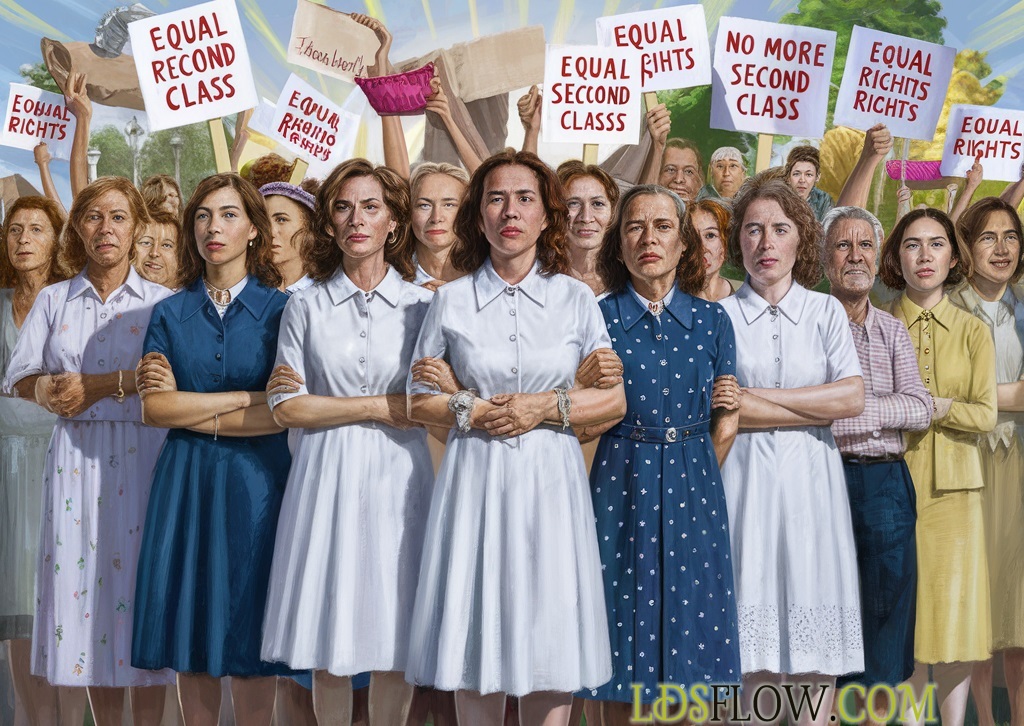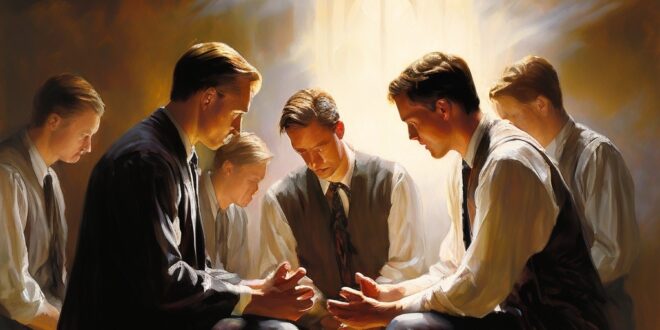In recent years, Mormonism has found itself thrust into the spotlight, often facing criticism and misconceptions. The Broadway musical “The Book of Mormon” has certainly contributed to this increased visibility, but it has also perpetuated some stereotypes. As a 14 million-strong religion, the Church of Jesus Christ of Latter-day Saints (LDS Church) is frequently misunderstood. Let’s explore some common misconceptions and shed light on the reality of this faith in today’s world.
1. “Mormons Aren’t Christians” – A Matter of Perspective
One prevalent misconception is that Mormons aren’t Christians. This belief persists despite Mormons praying in the name of Jesus Christ, studying His teachings, and considering Him central to their faith.

The confusion stems from theological differences between Mormonism and mainstream Christian denominations. Many Christian leaders point to these differences as reasons why Mormons shouldn’t be considered part of the Christian tradition. Additionally, some evangelical groups maintain anti-Mormon sentiments rooted in historical prejudices.
Mormons themselves contribute to this separation by claiming their faith offers a “restoration” of doctrines lost to mainstream Christianity. This stance can create distance from other Christian denominations.
However, from a practical standpoint, Mormons engage in many recognizably Christian practices. They celebrate Christmas, read the New Testament, and center their faith on Jesus Christ. The question of whether Mormons are Christians often depends on who you ask and how they define Christianity.
2. “Mormon Women Are Second-Class Citizens” – A Complex Reality
The role of women in the LDS Church is another area of misunderstanding. While it’s true that the church’s leadership structure is male-dominated and there are elements of gender inequality, the reality is more nuanced than often portrayed.

Women in the LDS Church cannot hold the priesthood or occupy top leadership positions. The church’s teachings also emphasize traditional gender roles within families. However, Mormonism also includes progressive elements. The faith includes belief in both Heavenly Father and Heavenly Mother, acknowledging divine femininity. Mormon history includes notable women leaders and suffragists.
Today, many Mormons identify as “Mormon feminists,” working to address gender inequalities while maintaining their faith. This internal dialogue showcases the complexity of gender issues within the religion. The rise of outspoken Mormon feminists within the church itself is perhaps the strongest rebuttal to claims of women’s oppression in LDS culture.
3. “All Mormons Practice Polygamy” – A Historical Misconception
One of the most persistent myths about Mormonism is the practice of polygamy. While it’s true that polygamy was once part of Mormon history and theology, mainstream Mormons have not practiced it for over a century. Joseph Smith, the founder of Mormonism, did introduce and practice polygamy, marrying at least 33 women. However, in 1890, the LDS Church officially abandoned the practice under political pressure.

Today, any member who engages in polygamy faces excommunication from the mainstream church. That said, some ultra-orthodox splinter groups continue the practice, which contributes to the confusion.
Interestingly, polygamy remains a complex topic within Mormon theology. The concept of eternal marriage in LDS temples leaves room for interpretation about the afterlife. Some Mormons believe polygamy may exist in heaven, while others reject this notion entirely. This theological ambiguity adds to the ongoing tension surrounding the topic.
It’s ancient history. Yes, it happened, but it’s long gone. Today’s reality is what matters in this debate.
4. “Mormons Are All White, Conservative Americans” – A Global, Diverse Faith
Contrary to popular belief, Mormonism is not a predominantly white, English-speaking, conservative American religion. In fact, it’s a global faith with significant diversity.

Of the 14.1 million Mormons worldwide, fewer than half live in the United States. South America has a larger Mormon population than Utah, the faith’s historical center. The church also has substantial followings in the Philippines, Pacific Islands, and is growing rapidly in Africa.
In the United States, recent converts are predominantly Latino, reflecting changing demographics. Globally, 4.5 million LDS Church members speak Spanish.
While American Mormonism has a reputation for conservatism, this is more a cultural phenomenon than a doctrinal requirement. As the church becomes more diverse, there are signs of evolving political stances, particularly on issues like immigration reform.
5. “Mormon Politicians Can’t Separate Faith from Governance” – Political Diversity in Practice
With prominent Mormon politicians like Senator Mike Lee and former Governor Jon Huntsman Jr. in the public eye, questions occasionally arise about the relationship between the LDS Church and government.
While some non-Mormons express concern about potential church influence on Mormon politicians, it’s important to note that Mormons have held various political offices for over a century without significant controversy. As of 2023, 9 Mormons serve in the U.S. Congress, including figures from both major parties, demonstrating a range of political ideologies.
The LDS Church itself maintains a stance of political neutrality, instructing its leaders and employees not to endorse or campaign for specific candidates. This policy helps to ensure that individual Mormon politicians can make decisions based on their own conscience and constituents’ needs, rather than church directives.
Moreover, Mormon politicians have shown the ability to separate their religious beliefs from their public service. For example, Senator Mitt Romney, while no longer in office, notably voted to impeach former President Trump twice, despite significant pressure from his largely conservative constituent base in Utah.
While the church has been involved in some political issues, such as campaigns against same-sex marriage in the past, it has also taken progressive stances on issues like immigration reform and environmental stewardship in recent years, showcasing a evolving and nuanced approach to political engagement.
In conclusion, Mormonism is a complex and often misunderstood faith. As with any religion, it defies simple categorization. While rooted in unique doctrines and practices, it continues to evolve and adapt to the modern world. Understanding the realities behind the myths is crucial for fostering religious tolerance and meaningful dialogue in our diverse society.
 LDS Flow A comprehensive online experience for members of The Church of Jesus Christ of Latter-day Saints.
LDS Flow A comprehensive online experience for members of The Church of Jesus Christ of Latter-day Saints.




